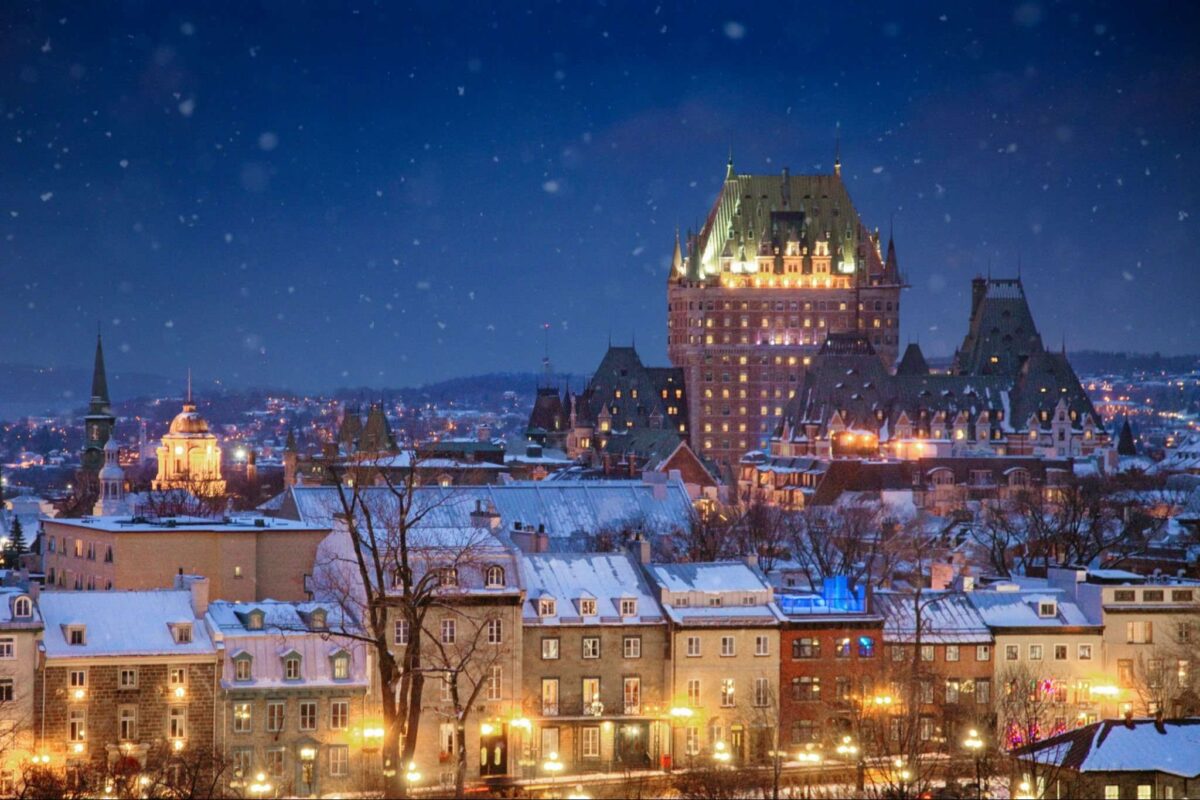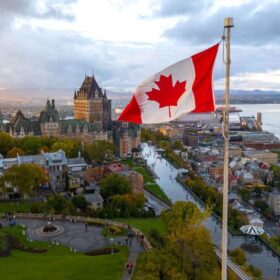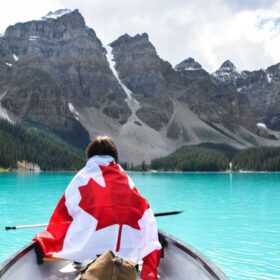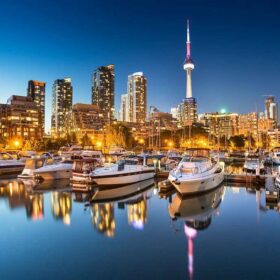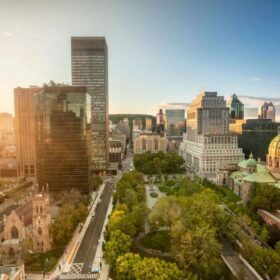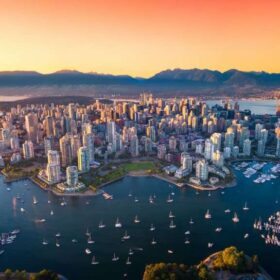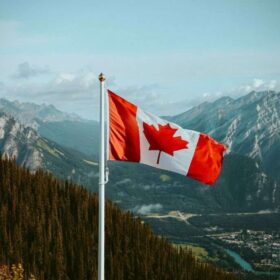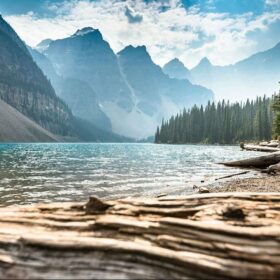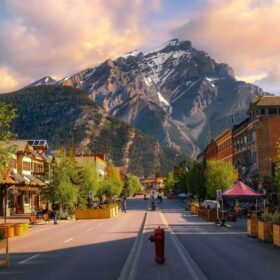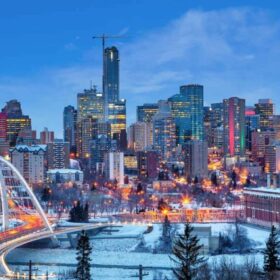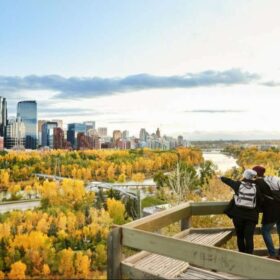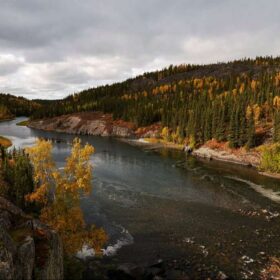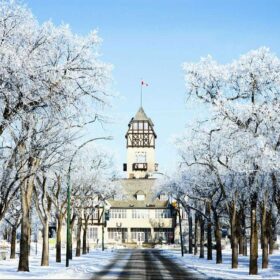The only walled city in North America and a UNESCO World Heritage Site, Québec City, a French-speaking destination, boasts a strategic location atop steep cliffs overlooking the St. Lawrence River. Established in 1608 as a fur trading colony at present-day Place Royale, it swiftly evolved into an administrative hub and is now the capital of Québec Province, standing out as one most beautiful cities in Canada.
The Upper Town, also known as Haute-Village, was initially designed for its military advantage and encompasses the defensive Citadel, along with iconic landmarks like the Château Frontenac and City Fortifications.
The Lower Town (or Basse-Ville), where the original settlement thrived, is celebrated for its charming, narrow streets and historic stone buildings. Notable sites such as Place Royale and the Quartier Petit Champlain are situated here. The connection between the Upper Town and the Lower Town is facilitated by sets of stairs, steep streets, and the funicular, providing an easily navigable area on foot. At the base lies the St. Lawrence River, enhancing the overall picturesque setting.
Adjacent to the waterfront at Vieux Port (Old Port) is the Québec-Levis Ferry, offering access to various tourist attractions, including the Musée de la Civilization. Winding streets and a few steep staircases connect the upper and lower districts, offering a charming exploration of the city. Plan your next getaway with our list of the best things to do in Québec City.
1. Place Royale
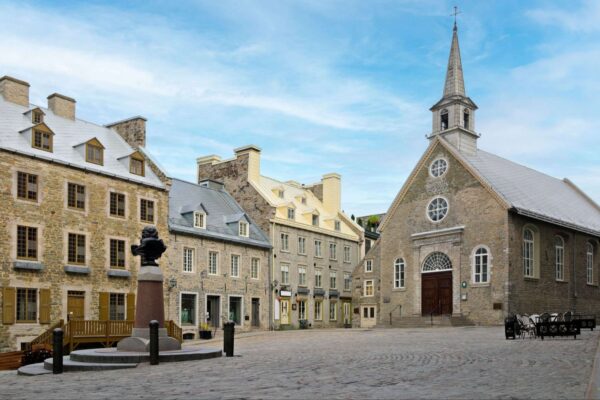
This area is the focal point for tourists in Québec, offering a blend of history and modern ambiance with its array of restaurants, patios, and shops housed within the historic structures.
Place Royale occupies the site of Québec’s actual founding, where Samuel de Champlain erected a fur trading post in 1608, eventually evolving into the capital of French America. Named after Louis XIV, whose bust graces it, Place Royale stands as the largest surviving collection of 17th- and 18th-century buildings in North America.
The charming stone church, Notre-Dame des Victoires, overlooks a cobbled square, accompanied by Maison Chevalier of the Musée de la Civilisation. Adjacent to Place Royale, along the river and surrounded by robust walls and palisades, stands the petite Batterie Royale, constructed in 1691.
In the summer, outdoor dining areas bring life to the surroundings. In winter, a blanket of snow transforms the old streets and stone buildings into a picturesque scene. This area is a delightful destination for wandering during the day or evening, in any season.
2. Old Quebec Funicular
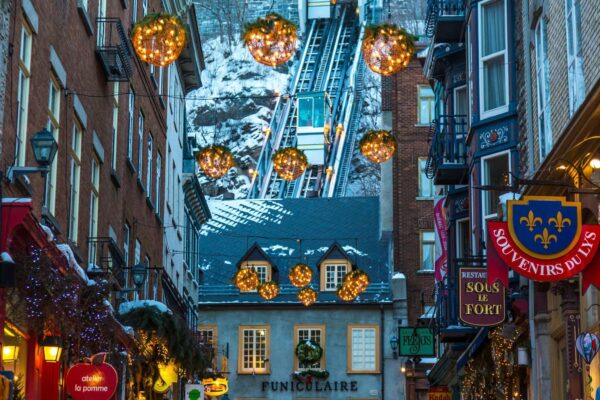
A fantastic means of traveling from Lower Town to Upper Town is by riding the Old Quebec Funicular, connecting the two areas. In addition to sparing, you from the steep Breakneck Stairs, it provides captivating views of the city and the river below.
Established in 1879, the funicular transports visitors either up or down the cliffside at a sharp 45-degree angle. Despite the brief duration, taking only a few minutes to ascend the 200 feet to Upper Town, the experience is highly rewarding, offering a historical ambiance and charm.
Quartier Petit Champlain
The stone structures lining the pedestrian-only streets now host a diverse array of shops, services, and restaurants. This is the ideal place for leisurely strolls and casual exploration, and it’s a genuinely charming area throughout the year.
Visitors will discover artisan boutiques, Québec-cuisine restaurants and bistros, art galleries, and a delightful array of confectionery shops offering everything from handmade fudge and nougat to a stylish Crêperie. Clothing boutiques in this area feature unique items for sale, ranging from stores specializing in alpaca products to those showcasing the latest fashion trends.
Photographers will also find captivating scenes in the Quartier Petit-Champlain. The umbrella-covered lane (Rue du Cul de Sac) provides a colorful spectacle, along with a bit of shelter from the sun or rain. While exploring, make sure to stop by La Fudgerie for a sweet treat. Keep an eye out for the large trompe-l’oeil mural (Fresque du Petit-Champlain) at the far end of Rue du Petit-Champlain, offering a glimpse into the city’s history.
3. La Citadelle
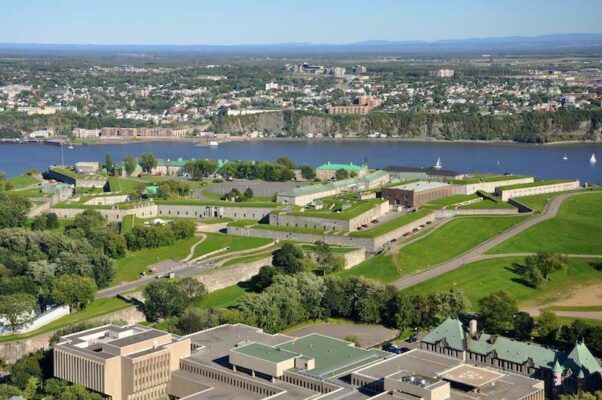
Spanning a vast portion of the city center is a monumental citadel, meticulously constructed over decades by both the French and later the British to safeguard Quebec from potential American threats. Referred to as ‘La Citadelle’ in French, this star-shaped fortress offers delightful green spaces and robust fortifications for exploration, complemented by an excellent on-site museum.
Due to its strategic position, Cap Diamant has hosted numerous forts throughout the centuries, with the present citadel dating back to 1850. In addition to immersing oneself in the history of this National Historic Site, visitors can witness the daily changing of the guard ceremony.
4. Parliament Building
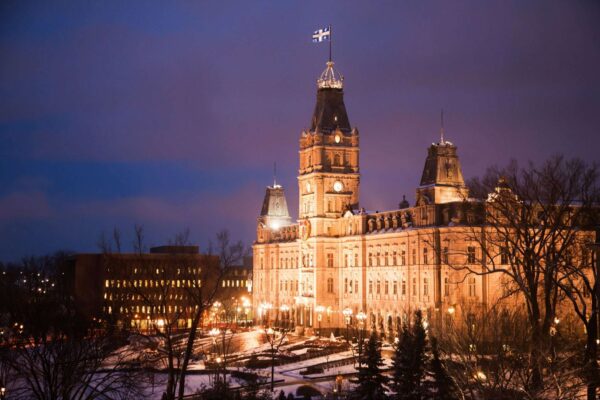
The district, expansively arranged just southwest of the historic Upper Town, serves as the headquarters for Québec’s provincial government. The Parliament finished in 1877 and later expanded, which could easily have drawn inspiration from various public buildings in Paris. The Salle de l’Assemblée Nationale (National Assembly) and Salle du Conseil Législatif (Legislative Council) are accessible to the public, both featuring exquisite historic chambers with lavish furnishings. It is advisable to secure tickets in advance.
In proximity, discover the Grand Théâtre, a venue hosting plays, concerts, and symphony performances, along with the expansive Palais des Congrès shopping and entertainment complex.
5. Plains of Abraham (Champs de Bataille)
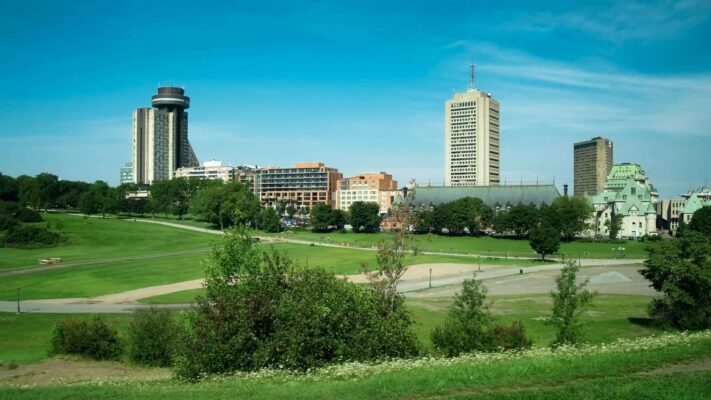
Beyond the city walls, west of the Citadel lies the expansive green area known as the Plains of Abraham (Champs de Bataille), where in 1759, the British, led by General Wolfe, engaged the French under Montcalm and emerged victorious. Exhibits recount the tumultuous history of how Québec City resisted and eventually succumbed to the British.
The park also houses the remnants of two Martello towers, later additions to Québec’s fortifications. Initiated in the late 1930s, the Joan of Arc Garden, designed by Louis Perron, features a splendid display of flowers from spring until fall.
Families with children will discover interactive exhibits at the museum, designed to engage young visitors with history. Additionally, young children can enjoy the family “treasure hunt,” promoting exploration and discovery within the park.
6. Château Frontenac
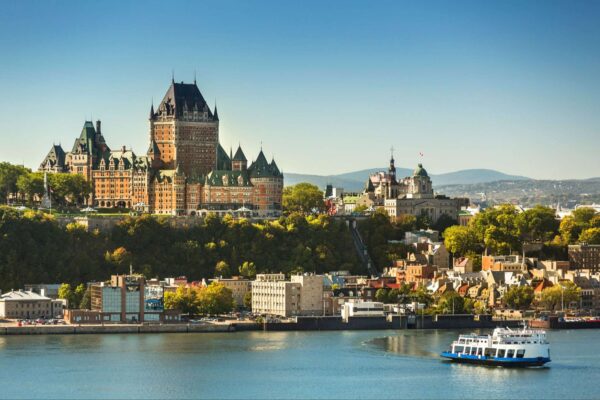
Built for the Canadian Pacific Railway in 1894, the majestic Fairmont Le Château Frontenac stands as one of the city’s most distinguished landmarks and revered hotels. This historic establishment is visible from miles away, with its nighttime appearance being particularly impressive.
In front of the hotel, Terrasse Dufferin provides breathtaking views to the north, extending towards the Laurentians, while the Promenade des Gouverneurs leads southward to the Citadel and Plains of Abraham. This elevated location was the original site of Fort St.-Louis, the governor’s residence during colonial times, and tourists can explore the ruins beneath the promenade.
Château Frontenac holds historical significance for hosting the Québec Conference in August 1943. During this conference, prominent figures such as Winston Churchill, Franklin D. Roosevelt, William L. M. King, Vice-Admiral Lord Mountbatten, U.S. Chief of Staff General George C. Marshall, and others laid the groundwork for the D-Day landings in Normandy on June 6, 1944.
7. Musee de la Civilisation
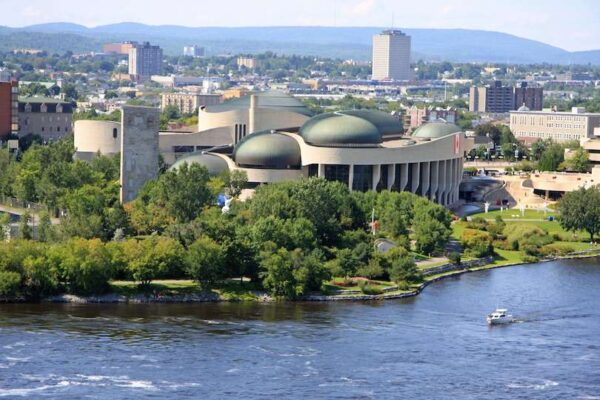
The Musée de la civilisation in Québec City is a multifaceted institution that explores various aspects of human history and the establishment of French America. The main museum, located in Basse-Ville near the Old Port and designed by the renowned architect Moshe Safdie, is architecturally captivating. Its permanent collection not only draws from civilizations worldwide but also delves into the Québec experience.
The Musée de l’Amérique Francophone (Museum of French America) finds its home in the historic Séminaire de Québec in Upper Town. True to its name, the museum covers all facets of the history of the French in North America.
Furthermore, the Musée de la civilization presents exhibits at Place Royale, the site where Samuel de Champlain founded Québec, marking the inception of the first permanent French settlement in North America.
8. Cathedral-Basilica of Notre-Dame de Quebec
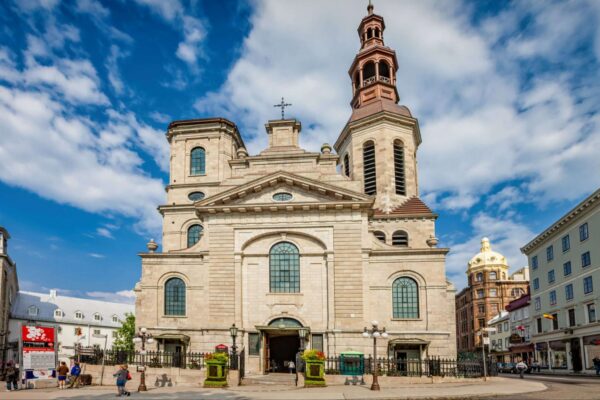
The Cathedral-Basilica of Notre-Dame de Québec, the oldest church in Canada, has occupied the same site since 1647. Despite enduring several fires and destruction over its lengthy history, the basilica consistently rose again, each time more substantial and more impressive than before.
Situated in the heart of Old Quebec, the present cathedral presents a somewhat austere exterior, characterized by a massive gray facade adorned with two asymmetrical towers. However, the interior tells a different tale, featuring an illuminated space adorned with dazzling treasures, vibrant stained-glass windows, and historical religious paintings.
9. Montmorency Falls Park
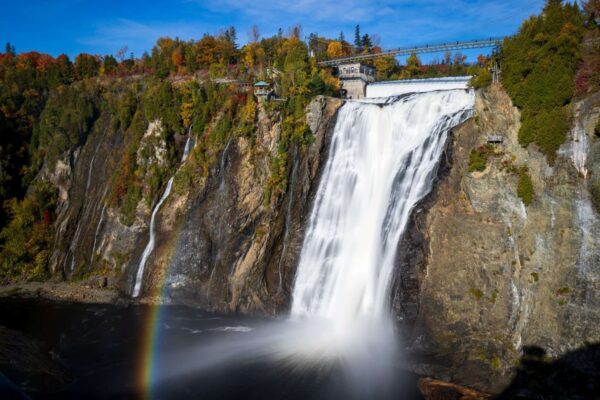
A mere fifteen-minute drive to the northeast of town reveals one of the region’s most remarkable natural wonders, the majestic Montmorency Falls. Nestled in a picturesque park sharing its name, the waterfall soars to an impressive 275 feet, surpassing the height of the renowned Niagara Falls.
While capturing the stunning white cascade in photos is undoubtedly a highlight, the park itself offers additional attractions. Visitors can explore a suspension bridge and a cable car that provide panoramic views of the falls. Additionally, the park features excellent hiking trails, playgrounds, and even zip lines for the enjoyment of visitors.
10. Basilica of Sainte-Anne-de-Beaupré
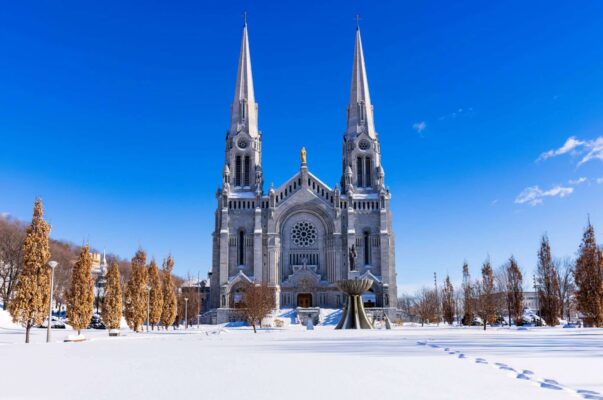
Sainte Anne recognized as the patron saint of Québec and renowned for numerous healing miracles, is venerated at the stunning Catholic Basilica located northeast of Québec in Beaupre. Drawing half a million pilgrims annually, the current church dates back to 1926, with the initial chapel established on this site in the 17th century.
Another prominent Catholic Basilica is the Cathedrale Notre-Dame-de-Quebec, designed by architect Baillairgé and finalized in 1844. The interior of Notre-Dame de Québec is highly impressive, featuring a beautiful altar, Episcopal canopy, and stained-glass windows.
Accommodation: Where to Stay in Quebec City: Best Areas & Hotels
FAQs
Q: What is the best time to visit Quebec City?
A: The best time to visit depends on your preferences. Summer offers outdoor festivals, while winter is perfect for the magical Winter Carnival.
Q: Are there family-friendly activities in Quebec City?
A: Absolutely! From the Aquarium du Québec to family-oriented events, Quebec City caters to visitors of all ages.
Q: How can I explore the city’s nightlife?
A: Explore popular bars like Le Drague Cabaret Club and experience the vibrant energy of Quebec City after dark.
Q: What are some recommended day trips from Quebec City?
A: Consider day trips to Mont-Sainte-Anne for skiing or Canyon Sainte-Anne for breathtaking natural beauty.
Q: Any safety tips for travelers visiting Quebec City?
A: While the city is generally safe, be vigilant, follow local guidelines, and keep emergency contact information handy for a secure visit.

